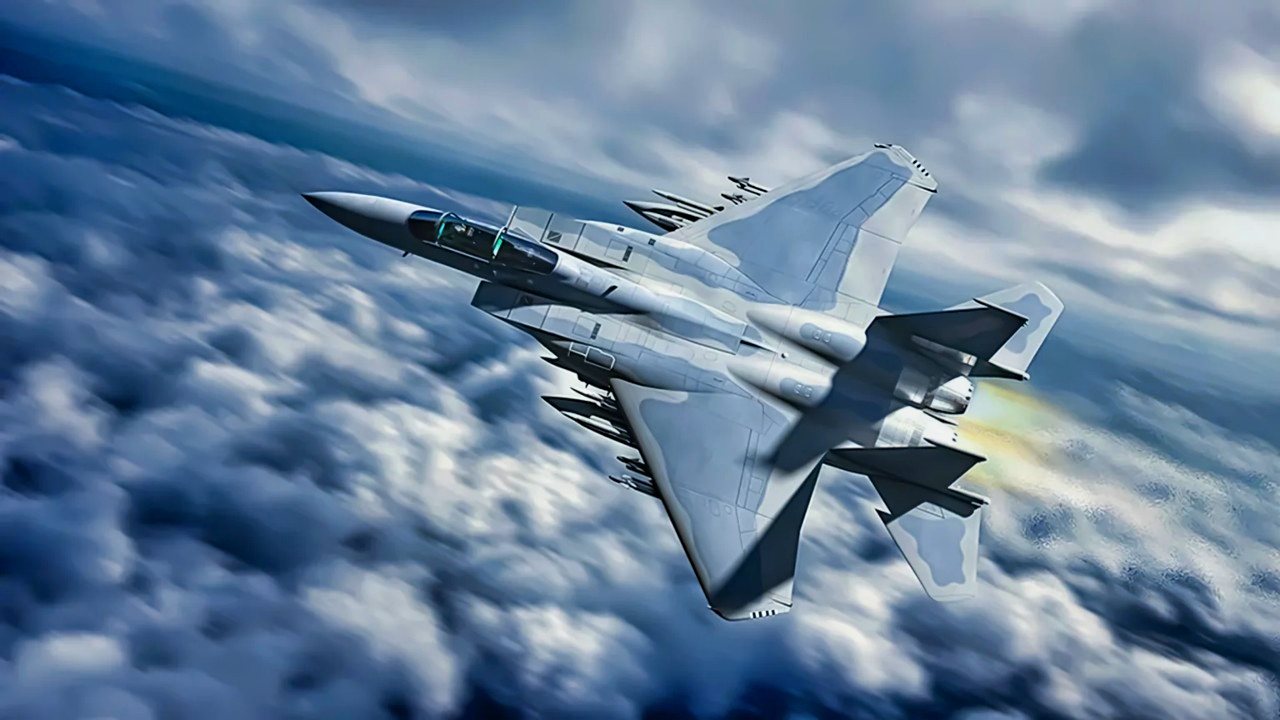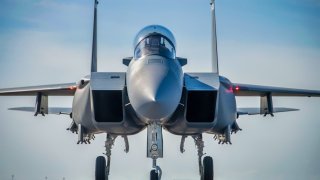Why Is the F-15X Eagle II Fighter So Expensive?
The F-15EX Eagle II, the latest and greatest edition (essentially a 4.5-generation upgrade) of the two-seater F-15E Strike Eagle, officially entered into operational service with the U.S. Air Force this past June.
What You Need to Know: The F-15EX Eagle II, an upgraded 4.5-generation fighter, entered U.S. Air Force service in June and is generating international interest, with Israel already securing a $18 billion deal for 25 airframes.

-While positioned as a cost-effective alternative to fifth-generation jets like the F-35, the F-15EX faces criticism for its high "flyaway" cost, which has ballooned to $94 million per aircraft due to inflation and reduced order sizes. Boeing is optimistic that foreign military sales, including potential deals with Indonesia and Poland, will help control costs.
-Despite its price, the Eagle II remains a highly capable platform for modern air operations.
F-15EX Eagle II: The Costly Yet Capable Fighter Jet Gaining Global Attention
Although operational fifth-generation stealth fighters and up-and-coming sixth-generation fighter planes are all the rage these days, upgraded editions of time-honored and battle-proven fourth-generation fighters aren’t quite ready to “go gentle into that good night.”
The F-15EX Eagle II, the latest and greatest edition (essentially a 4.5-generation upgrade) of the two-seater F-15E Strike Eagle, is a prime example of this. The Eagle II officially entered into operational service with the U.S. Air Force this past June, and two months later was approved for sale to (in a $18 billion deal for twenty-five airframes)) to the Israeli Air Force (IAF), who are officially redesignating the fighter-bomber the F-15IA. Indonesia and Poland are lining up in the proverbial queue of potential foreign military sales (FMS) customers, and there’s also at least the possibility that the Republic of China Air Force (ROCAF), i.e., the Taiwanese Air Force, will be purchasing the warbird in the near future as an extra bulwark against Beijing’s aggression.
If there’s any flaw that can be found with the F-15EX, it’s this one: she’s just so expensive.
Less Expensive in Theory…
Ideally, the Eagle II is meant to provide a less expensive stopgap solution to address the void left by the shortage of fifth-generation stealth fighters in the U.S. Armed Forces arsenal. This shortage was caused by the double-whammy of 1) then-U.S. Secretary of Defense Bob Gates’s short-sighted decision in 2009 to kill the Lockheed Martin F-22 Raptor program after fewer than half the original number ordered were built, and (2) ongoing reliability and cost overrun issues with the Lockheed Martin F-35 Lightning II.
Indeed, as Boeing proudly declares on its info page on the Eagle II:
“Ready to fight as soon as it comes off the line, the F-15EX is the most affordable, reliable, and immediate way to refresh the capacity and update the capabilities of tactical fighter fleets … With low operating costs compared to other fighters yet four times the weapons payload and twice the fuel, range, and speed, the F-15EX represents a modern solution that global Air Forces can field within their schedule.”
…But Pricier in Practice
And then the reality slaps you awake: As my colleagues Maya Carlin and Peter Suciu wrote in a May 20, 2024, article for The National Interest, “How Can the F-15EX Fighter Be More Expensive Than the F-35?”,
“Last October, the DoD warned that the F-15EX could have a ‘flyaway cost’ of as much as $94 million per aircraft, and that’s only if the U.S. Air Force followed through on its plans to acquire 104 aircraft. If that number drops, the costs would go up. According to Air & Space Forces magazine, the air service had previously eyed purchasing as many as 200 Eagle IIs, only to reduce that number. The initial unit cost estimate for the multirole F-15EX had been $80 million – which even then wasn’t exactly a bargain, as it was on par with the F-35 … It is more than just the order being slashed. The flyaway cost values an aircraft’s cost of production, as well as the production tools essential for building it, and that has increased due to inflation and continued supply chain woes. Boeing had backtracked on its estimates.”
Looking Forward…
Digging a bit deeper, the authors add that Boeing officials have vowed to bring the costs down, and they have suggested that those aforementioned current and prospective FMS transactions will help control the cost of the warbird.
There’s also that small, trifling matter of Boeing’s recent poor safety record, which makes for a whole separate discussion in and of itself. But seeing how the IAF has managed to avoid the bugs in its own F-35s that have so constantly plagued the American-owned Lightning IIs, I imagine that the same Israeli ingenuity will be applied to the F-15EX. And for all of the hullabaloo made about the reliability issues plaguing Boeing products, I’ve yet to hear any such complaints being leveled at the Eagle II (or any other variant of the Eagle jet for that matter).
About the Author: Christian D. Orr
Christian D. Orr is a Senior Defense Editor for the National Security Journal (NSJ). He is a former Air Force Security Forces officer, Federal law enforcement officer, and private military contractor (with assignments worked in Iraq, the United Arab Emirates, Kosovo, Japan, Germany, and the Pentagon). Chris holds a B.A. in International Relations from the University of Southern California (USC) and an M.A. in Intelligence Studies (concentration in Terrorism Studies) from American Military University (AMU). He has also been published in The Daily Torch, The Journal of Intelligence and Cyber Security, and Simple Flying. Last but not least, he is a Companion of the Order of the Naval Order of the United States (NOUS).
Image Credit: Creative Commons.

